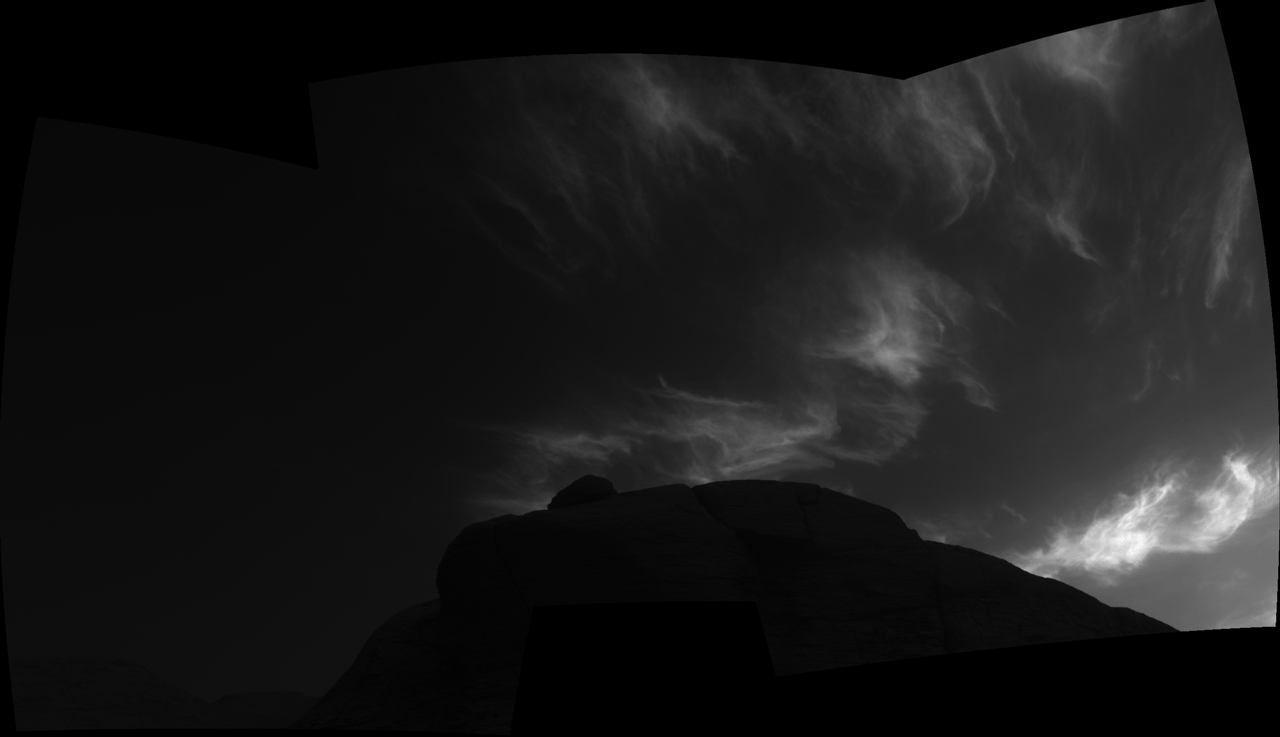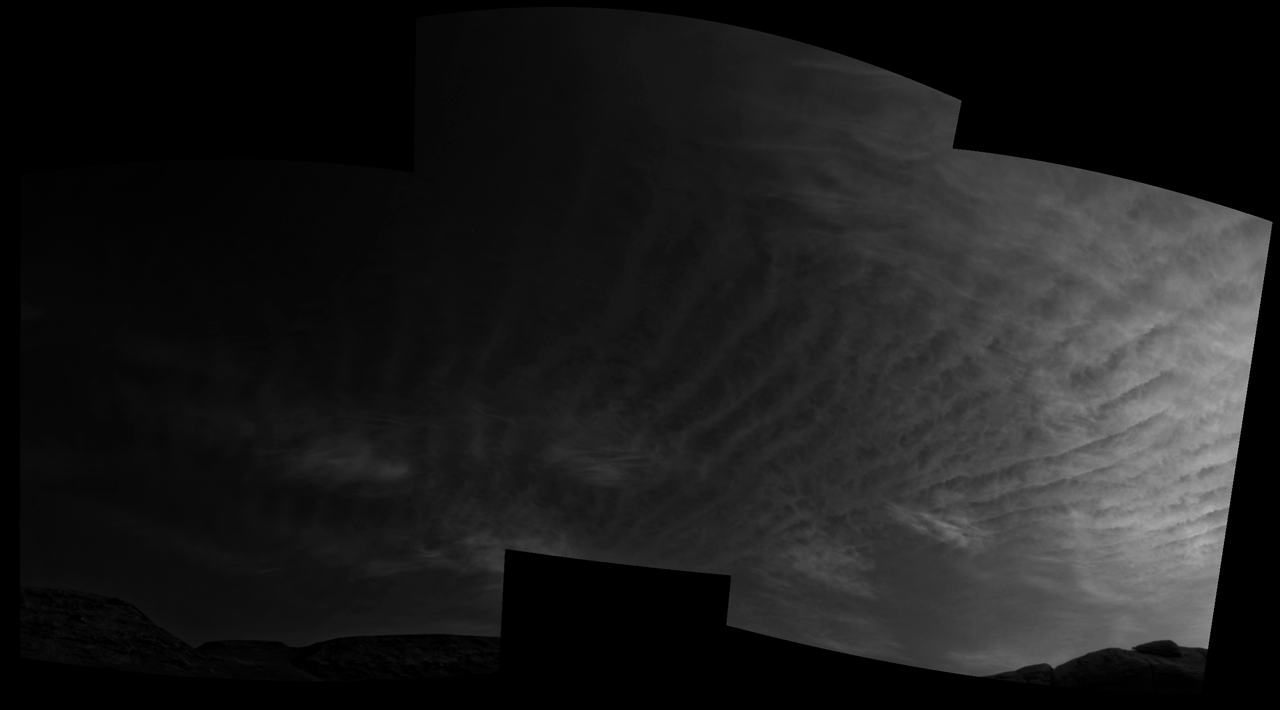NASA's Curiosity rover spots strange, colorful clouds on Mars

It might look like a postcard from Arizona, but this snapshot shows something much more exotic: the planet Mars, as seen by NASA's Curiosity rover.
The image is a combination of 21 individual photographs the rover took recently to study a strange type of wispy cloud over its Gale Crater home. Scientists realized two Earth years ago that the cloud type was forming earlier in the Martian year than they expected. So this Martian year, Curiosity was watching for the early clouds, and it was not disappointed. The clouds did indeed show up beginning in late January, when the robotic skywatcher began documenting the wispy, ice-rich clouds scattering sunlight in sometimes-colorful displays.
"I always marvel at the colors that show up: reds and greens and blues and purples," Mark Lemmon, an atmospheric scientist with the Space Science Institute in Colorado, said in a NASA statement. "It's really cool to see something shining with lots of color on Mars."
Related: NASA's Curiosity rover snaps scenic Mars selfie at 'Mont Mercou' (photo)
Strangely, these clouds appear higher in the Mars atmosphere than those clouds scientists typically see on the planet, according to NASA. Usually, if a cloud passes over Curiosity, the structures are full of water ice and float about 37 miles (60 kilometers) above the Martian surface.
The clouds in Curiosity's new photos are higher in the atmosphere, although NASA didn't specify their altitude. The distinction may reflect a different composition, clouds of frozen carbon dioxide or dry ice, according to the agency, although the scientists aren't yet confident in that explanation.




The clouds are at their prettiest just after sunset, when the last light makes the ice crystals glow, which is why scientists call them noctilucent, or night-shining. (Curiosity can monitor these noctilucent clouds with both its black-and-white navigation cameras and its color Mast Camera.)
Get the world’s most fascinating discoveries delivered straight to your inbox.
Some of these clouds even appear a bit iridescent when the cloud particles are very similar sizes, Lemmon said, which typically happens when clouds have just formed and have grown at the same speed.
Email Meghan Bartels at mbartels@space.com or follow her on Twitter @meghanbartels. Follow us on Twitter @Spacedotcom and on Facebook.
Meghan is a senior writer at Space.com and has more than five years' experience as a science journalist based in New York City. She joined Space.com in July 2018, with previous writing published in outlets including Newsweek and Audubon. Meghan earned an MA in science journalism from New York University and a BA in classics from Georgetown University, and in her free time she enjoys reading and visiting museums. Follow her on Twitter at @meghanbartels.



